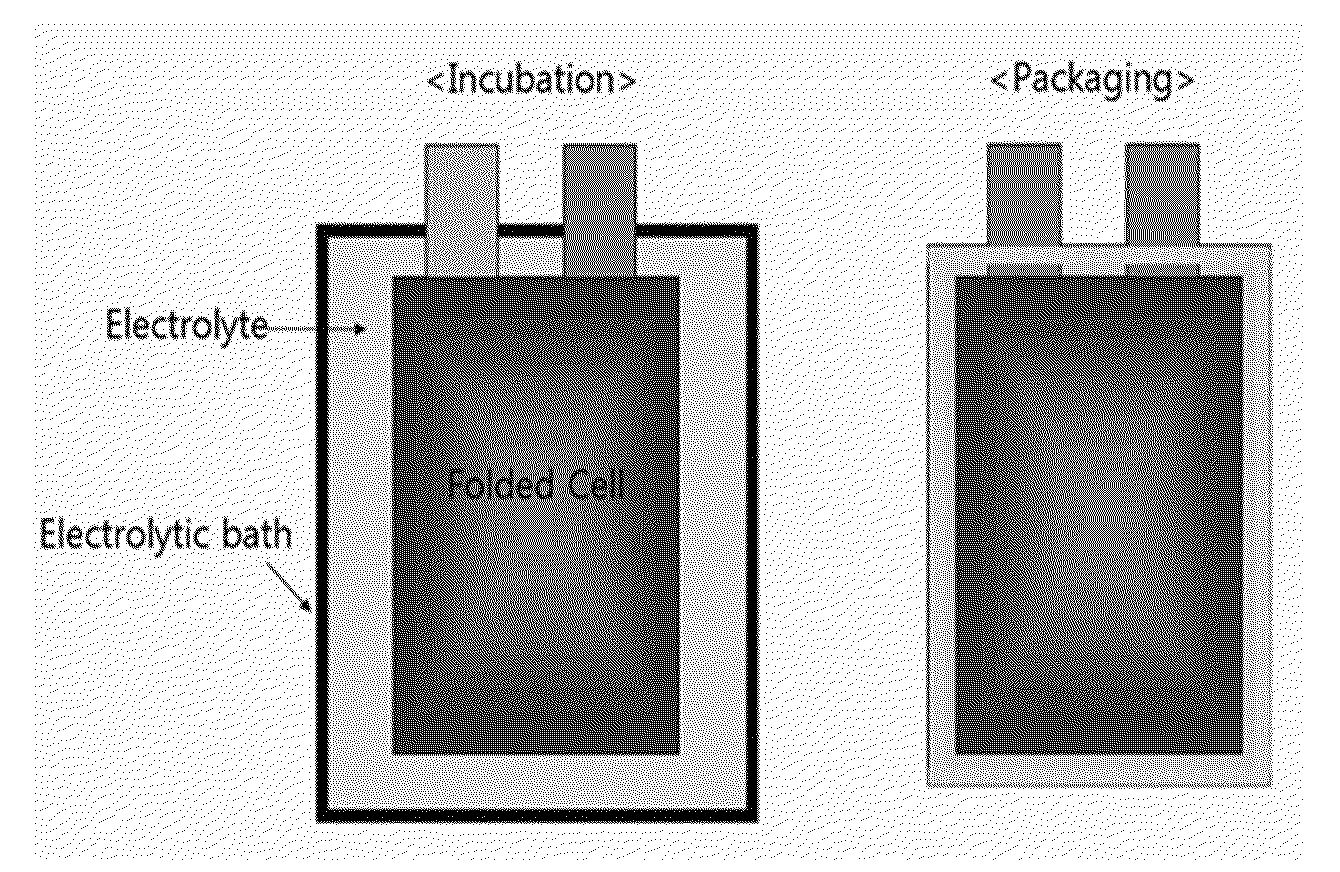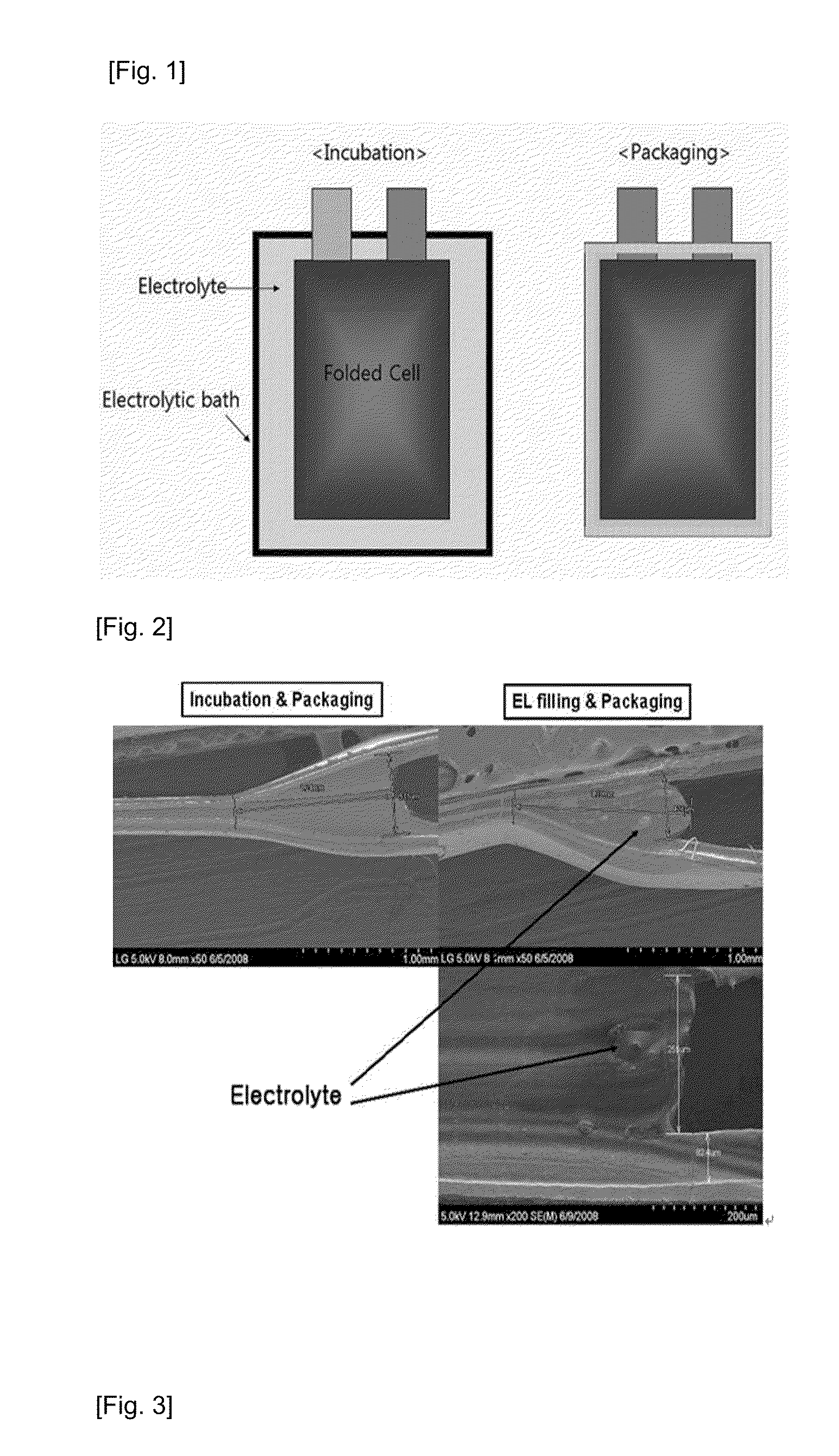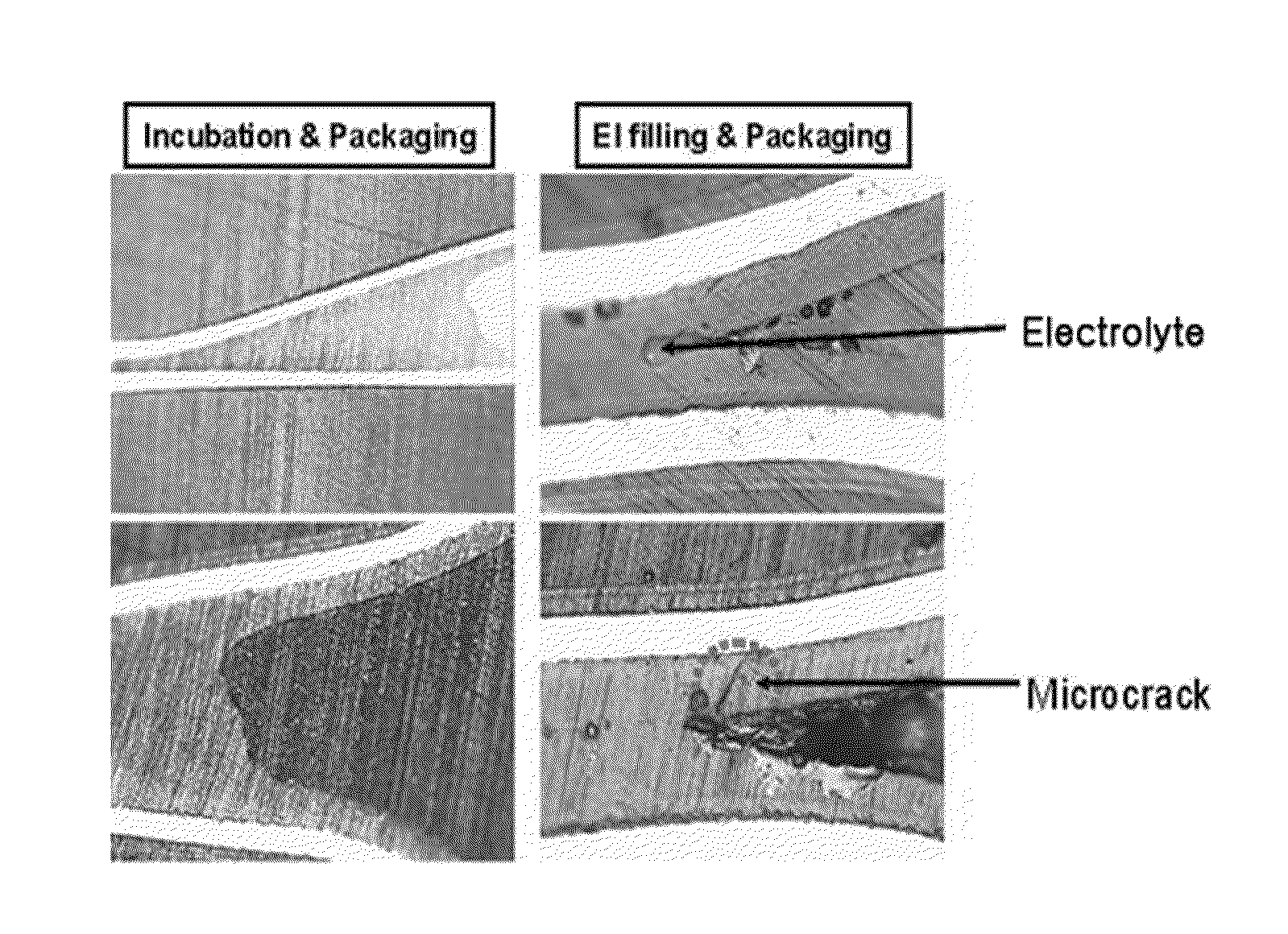Method for manufacturing lithium ion polymer battery, battery cell, and lithium ion polymer battery including the same
a lithium ion polymer and battery cell technology, applied in the field of pouch type lithium ion polymer batteries, can solve the problems of inability to satisfactorily solve the problem of adhesive sealing of electrolyte, degrade the sealing strength of the cell, and the use of hf in the cell, so as to achieve the effect of increasing the sealing strength
- Summary
- Abstract
- Description
- Claims
- Application Information
AI Technical Summary
Benefits of technology
Problems solved by technology
Method used
Image
Examples
embodiment
[0041]Electrolyte (Electrolytic salts: LiPF6; solvent: EMC / DMC / DEC / EC; additive: PS, VC, FEC) was put in an electrolytic bath, in which a battery cell (15 Ah class) was put such that an electrode part is entirely immersed, and then left for two hours at room temperature.
[0042]Thereafter, with the battery cell immersed in the electrolytic bath, the battery cell was activated through a cycle reaction of 1 cycle at 1.5 A and 3 hr.
[0043]Subsequently, the battery cell was taken out of the electrolytic bath and left on a mounting stand for one hour at room temperature. The thusly completed battery cell was put in an aluminum pouch (D-EL408H2 grade, DNP) and vacuum-sealed (upper and lower portions, 180° C., 2.5s, 95 kPa).
PUM
| Property | Measurement | Unit |
|---|---|---|
| discharge efficiency | aaaaa | aaaaa |
| pressure | aaaaa | aaaaa |
| State of Charge | aaaaa | aaaaa |
Abstract
Description
Claims
Application Information
 Login to View More
Login to View More - R&D
- Intellectual Property
- Life Sciences
- Materials
- Tech Scout
- Unparalleled Data Quality
- Higher Quality Content
- 60% Fewer Hallucinations
Browse by: Latest US Patents, China's latest patents, Technical Efficacy Thesaurus, Application Domain, Technology Topic, Popular Technical Reports.
© 2025 PatSnap. All rights reserved.Legal|Privacy policy|Modern Slavery Act Transparency Statement|Sitemap|About US| Contact US: help@patsnap.com



